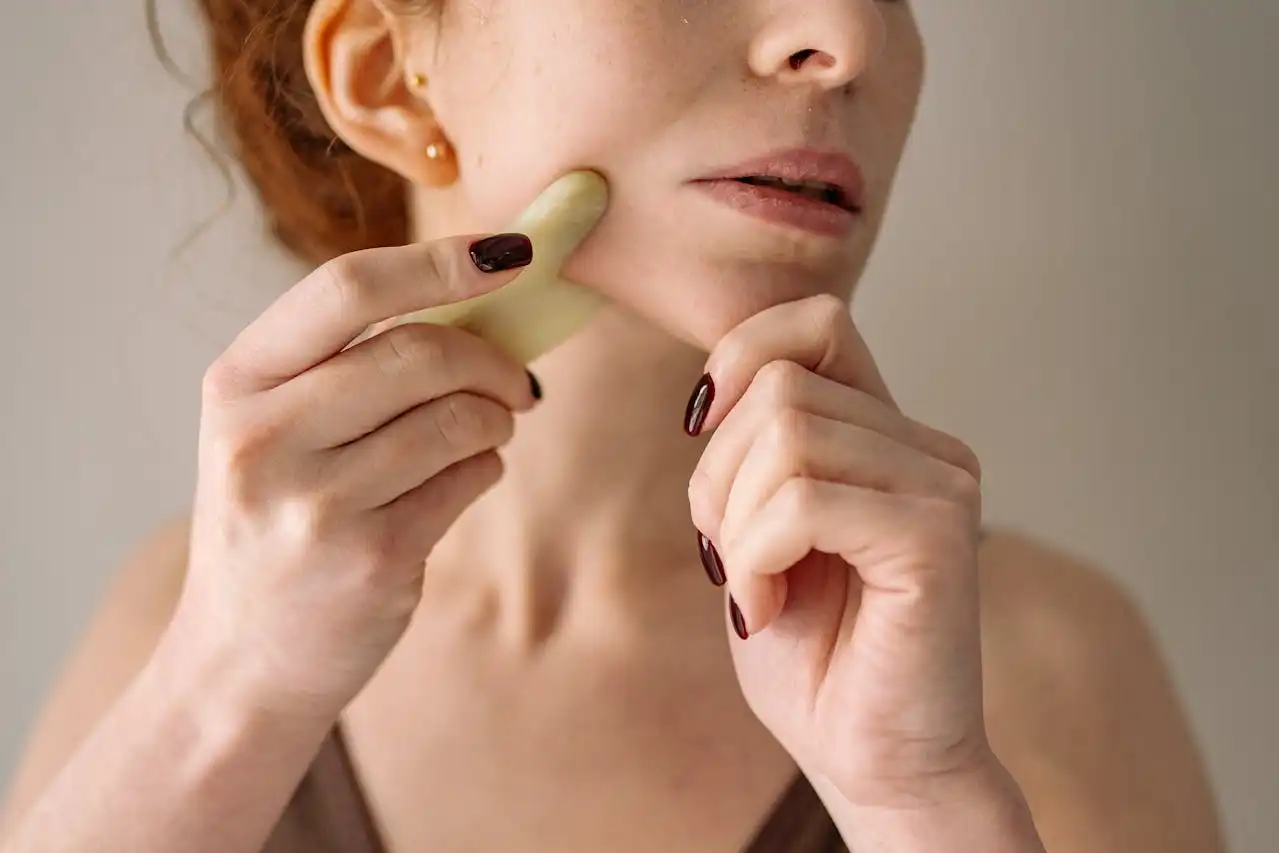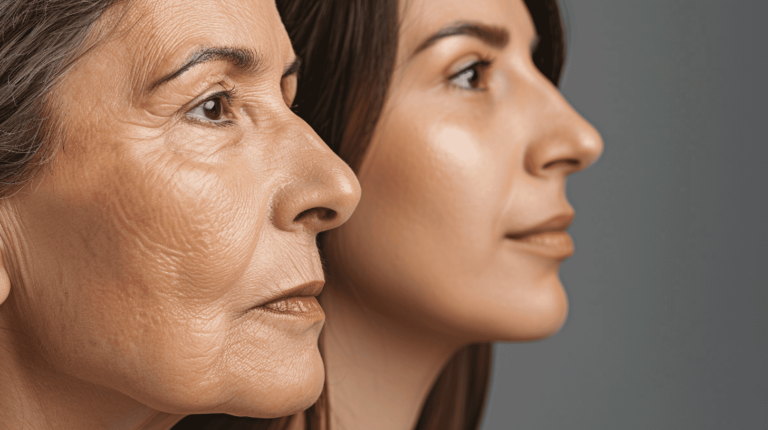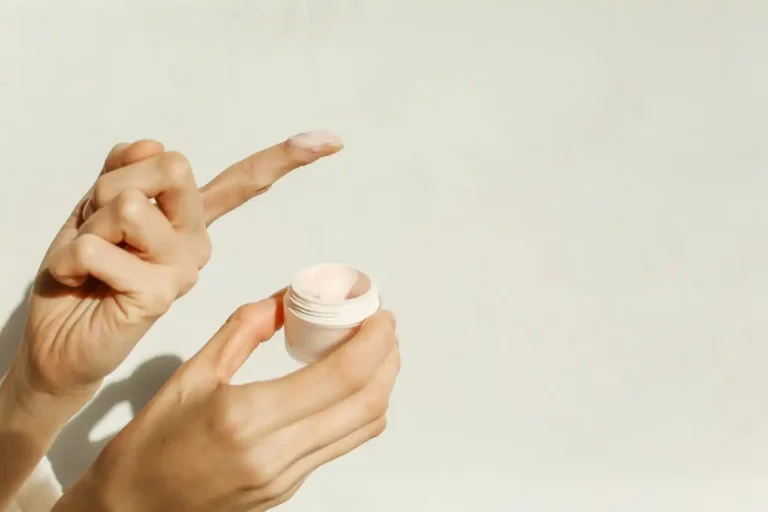Your Ultimate Night Skincare Routine for Anti-Aging: Transform Your Skin While You Sleep
Your skin works hardest at night, making this the perfect time to boost your anti-aging efforts.
While you sleep, your skin cells regenerate faster, blood flow increases, and collagen production peaks.
This creates an ideal window for powerful ingredients to work their magic and help you wake up with healthier, more youthful-looking skin.
Why Your Night Routine Matters More Than You Think

Your nighttime skincare routine deserves more attention than your morning regimen when it comes to fighting signs of aging.
During the day, your skin focuses on protection from environmental stressors like UV rays, pollution, and free radicals. At night, however, your skin switches into repair mode.
This repair process happens because your body’s circadian rhythm triggers increased cell turnover and collagen synthesis while you sleep.
Your skin temperature rises slightly, blood circulation improves, and your skin becomes more permeable to active ingredients.
You can take advantage of this natural process by applying targeted anti-aging products that work synergistically with your skin’s nighttime renewal.
The absence of sun exposure at night also means you can use photosensitive ingredients like retinoids and certain acids without worrying about increased sun sensitivity.
These powerful anti-aging ingredients can penetrate deeper and work more effectively when your skin is in its natural repair state.
Your skin also loses less moisture during nighttime hours compared to daytime, making it an optimal time for intensive hydration and treatment.
This extended contact time allows active ingredients to penetrate deeper layers of your skin and deliver maximum benefits.
Essential Steps for Your Anti-Aging Night Routine
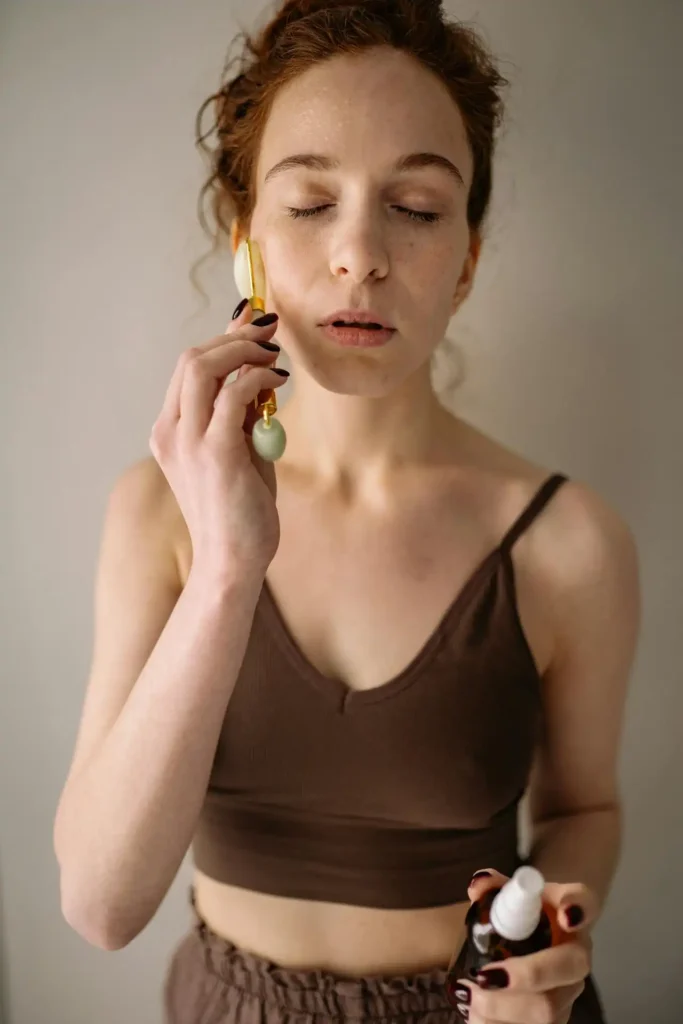
Step 1: Thorough Double Cleansing
Start your anti-aging night routine with a thorough double cleanse to remove makeup, sunscreen, pollution, and daily buildup.
Begin with an oil-based cleanser or cleansing balm to dissolve makeup and oil-based impurities.
Massage the cleanser into dry skin for about 30 seconds, then rinse with lukewarm water.
Follow with a gentle water-based cleanser to remove any remaining residue and prepare your skin for treatment products.
Choose a cleanser that maintains your skin’s natural pH balance and doesn’t strip away essential moisture.
Clean skin allows your anti-aging products to penetrate more effectively and work at their full potential.
Avoid harsh scrubbing or using cleansers with sulfates, which can irritate your skin and compromise its barrier function.
Your goal is to cleanse thoroughly while maintaining your skin’s protective barrier, which becomes increasingly important as you age.
Step 2: Gentle Exfoliation (2-3 Times Per Week)
Incorporate gentle exfoliation into your routine 2-3 times per week to accelerate cell turnover and improve product absorption.
Chemical exfoliants like alpha-hydroxy acids (AHAs) and beta-hydroxy acids (BHAs) work more effectively than physical scrubs for anti-aging purposes.
AHAs like glycolic acid and lactic acid help remove dead skin cells from the surface, revealing brighter, smoother skin underneath.
They also stimulate collagen production and can help reduce the appearance of fine lines and age spots over time.
BHAs like salicylic acid penetrate deeper into pores and can help with both anti-aging and acne concerns.
Start with lower concentrations and gradually increase as your skin builds tolerance. Always follow exfoliation with proper moisturization and sun protection the next day.
Step 3: Targeted Treatment Serums
Apply your most potent anti-aging ingredients in serum form while your skin is still slightly damp from cleansing.
This helps with product absorption and maximizes the benefits of active ingredients. Vitamin C serums can be used at night, though many people prefer morning application.
If you use vitamin C at night, choose a stable form like magnesium ascorbic phosphate or sodium ascorbic phosphate.
Apply a few drops to your face and neck, gently pressing the product into your skin.
Hyaluronic acid serums provide intense hydration and can hold up to 1000 times their weight in water.
Apply this ingredient to damp skin to lock in moisture and create a plumping effect that can minimize the appearance of fine lines.
Peptide serums help stimulate collagen production and can improve skin firmness over time.
Look for copper peptides, palmitoyl pentapeptide, or acetyl hexapeptide for the best anti-aging benefits.
Step 4: The Power of Retinoids
Retinoids represent the gold standard in anti-aging skincare and work best when applied at night.
These vitamin A derivatives accelerate cell turnover, stimulate collagen production, and can dramatically improve skin texture and reduce visible signs of aging.
Start with a low-concentration retinol product and use it only 2-3 times per week initially. Gradually increase frequency as your skin builds tolerance.
Apply retinoid products to completely dry skin and wait 20-30 minutes before applying moisturizer to minimize irritation.
Prescription retinoids like tretinoin offer more dramatic results but require medical supervision.
Over-the-counter retinol products provide gentler benefits and work well for most people beginning their anti-aging journey.
Always use retinoids consistently for at least 3-6 months to see significant results. Initial irritation, dryness, or peeling is normal and typically subsides as your skin adjusts to the product.
Step 5: Nourishing Eye Care
The delicate eye area shows signs of aging first and requires special attention in your nighttime routine.
Choose an eye cream or serum specifically formulated for nighttime use, as these products often contain higher concentrations of active ingredients.
Look for eye products containing caffeine to reduce puffiness, peptides to firm the skin, and hyaluronic acid for hydration.
Retinol can also be beneficial for the eye area but should be introduced very gradually and in lower concentrations than what you use on your face.
Apply eye products using your ring finger, which applies the least pressure. Gently tap the product around the orbital bone, avoiding the immediate eye area and lash line.
Start from the inner corner and work outward, then gently pat any excess product with a clean finger.
Step 6: Deep Moisturization and Barrier Repair
Choose a richer, more occlusive moisturizer for nighttime use compared to your daytime formula.
Night moisturizers often contain ingredients like ceramides, cholesterol, and fatty acids that help repair and strengthen your skin barrier while you sleep.
Look for moisturizers with ingredients like niacinamide, which can improve skin texture and reduce the appearance of pores.
Squalene provides lightweight hydration without clogging pores, while shear butter offers rich nourishment for dry or mature skin.
Apply moisturizer while your skin is still slightly damp from previous products to lock in hydration. Use upward strokes and gentle pressure to avoid pulling or tugging on your skin.
Key Anti-Aging Ingredients to Prioritize
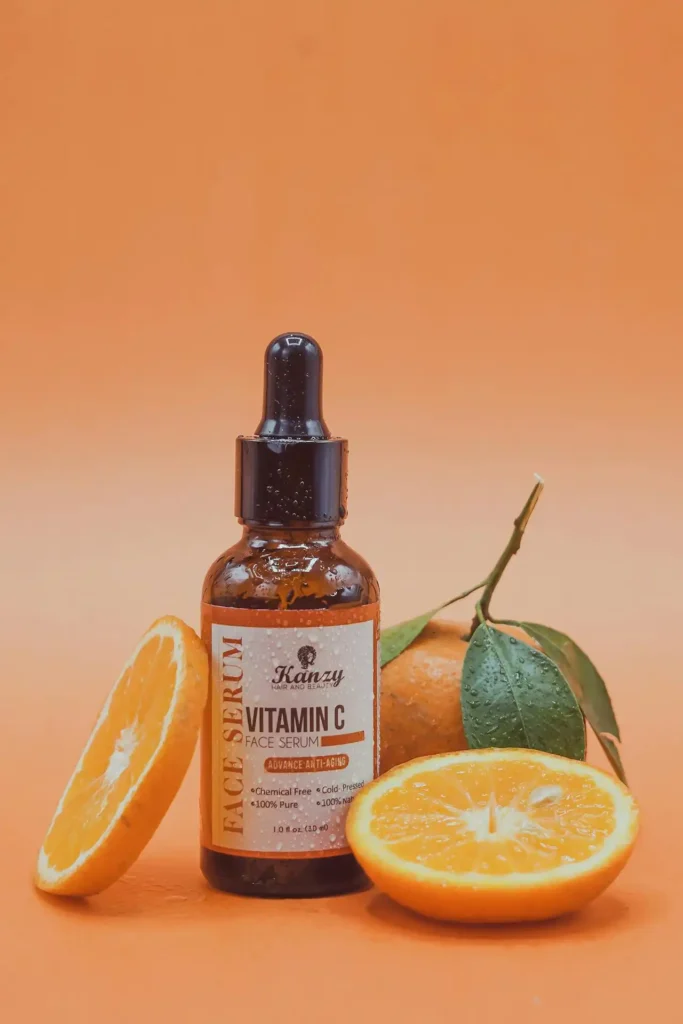
Retinoids: The Proven Powerhouse
Retinoids remain the most scientifically proven anti-aging ingredients available. This process helps reduce fine lines, improve skin texture, and fade dark spots over time.
They work by binding to specific receptors in your skin cells and triggering increased cell turnover and collagen production.
Different forms of retinoids offer varying levels of potency and tolerability. Start slowly and be patient with the process, as the benefits compound over time.
Retinal palmitate provides the gentlest introduction, while retinol offers moderate strength, and prescription tretinoin delivers the most dramatic results.
Consistent use is key with retinoids – you need to use them regularly for several months to see significant improvements.
Peptides: Building Blocks for Firmness
Peptides are short chains of amino acids that signal your skin to produce more collagen and elastin.
They offer a gentler alternative to retinoids and can be particularly beneficial for sensitive skin types.
Copper peptides not only stimulate collagen production but also have anti-inflammatory properties.
Palmitoyl peptides can help improve skin firmness and reduce the appearance of wrinkles.
Acetyl hexapeptide is sometimes called “topical Botox” for its ability to relax facial muscles and reduce expression lines.
Peptides work well in combination with other anti-aging ingredients and rarely cause irritation, making them suitable for most skin types and concerns.
Antioxidants: Protection and Repair
Antioxidants protect your skin from free radical damage and can help repair existing damage. It works well with most other ingredients and rarely causes irritation.
Vitamin C remains the most popular and well-researched antioxidant for skincare, but others like vitamin E, ferulic acid, and niacinamide also offer significant benefits.
Niacinamide (vitamin B3) provides multiple anti-aging benefits including improved skin texture, reduced pore appearance, and enhanced barrier function.
Green tea extract, resveratrol, and coenzyme Q10 offer additional antioxidant protection and can help calm inflammation while supporting your skin’s natural repair processes.
Common Mistakes That Sabotage Your Results

Overdoing Active Ingredients
Many people make the mistake of using too many active ingredients at once or starting with concentrations that are too high.
This approach often leads to irritation, inflammation, and compromised skin barrier function – all of which can actually accelerate signs of aging.
Start with one new active ingredient at a time and introduce it gradually. Use lower concentrations initially and increase slowly as your skin builds tolerance.
Pay attention to how your skin responds and adjust accordingly. Remember that more is not always better when it comes to anti-aging skincare.
Consistent use of well-chosen products will deliver better results than constantly switching between multiple harsh treatments.
Neglecting Your Neck and Décolletage
Your neck and chest area are often overlooked in anti-aging routines, yet they show signs of aging just as prominently as your face.
The skin in these areas is actually thinner and more delicate than facial skin, making it more susceptible to damage.
Extend your skincare routine beyond your jawline to include your neck and upper chest area.
Use the same products you apply to your face, but be especially gentle with active ingredients like retinoids in these more sensitive areas.
Apply products using upward strokes on your neck and gentle outward motions on your décolletage. Don’t forget to include these areas in your sun protection routine as well.
Inconsistent Product Application
Consistency matters more than perfection when it comes to anti-aging skincare.
Skipping your routine frequently or constantly changing products prevents you from seeing the cumulative benefits of active ingredients.
Establish a realistic routine that you can maintain long-term rather than an elaborate regimen you’ll struggle to follow.
It’s better to consistently use three effective products than to sporadically use ten different treatments.
Set reminders or create habits that make your skincare routine automatic. Keep your products visible and easily accessible to encourage consistent use.
Building Your Perfect Personalized Routine

Consider Your Skin Type and Concerns
Tailor your anti-aging routine to your specific skin type and primary concerns.
Dry skin types may benefit from richer moisturizers and hydrating serums, while oily skin types might prefer lightweight formulations and BHA exfoliants.
If hyperpigmentation is your main concern, focus on ingredients like vitamin C, konjac acid, and arbutin. For loss of firmness, prioritize retinoids and peptides.
Fine lines around the eyes call for specialized eye treatments with gentle but effective ingredients.
Consider your lifestyle factors as well. If you have limited time, focus on multi-tasking products that address several concerns simultaneously.
If you have sensitive skin, introduce new ingredients very gradually and choose gentler formulations.
Start Simple and Build Gradually
Begin with a basic routine of cleanser, moisturizer, and one active ingredient. Master this routine for 4-6 weeks before adding new products.
This approach helps you identify which products work best for your skin and avoid overwhelming your skin with too many changes at once.
Once your skin has adapted to your basic routine, you can gradually introduce additional treatments.
Add one new product every 2-4 weeks and monitor how your skin responds before making further changes.
Keep detailed notes about what products you’re using and how your skin looks and feels.
This information will help you identify which ingredients and formulations work best for your unique skin needs.
Listen to Your Skin
Your skin’s needs may change with seasons, hormones, stress levels, and age.
Stay flexible with your routine and be willing to adjust products or frequency based on how your skin responds.
If you experience persistent irritation, scale back on active ingredients and focus on gentle, hydrating products until your skin barrier recovers.
If your skin seems to plateau, you might need to increase the concentration of active ingredients or introduce new treatments.
Regular skin assessments can help you track your progress and identify areas that need more attention. Take photos in consistent lighting to document improvements over time.
Conclusion
Consistency and patience will transform your skin while you sleep.
Choose quality ingredients, start slowly, and let your nighttime routine work its anti-aging magic over time.

